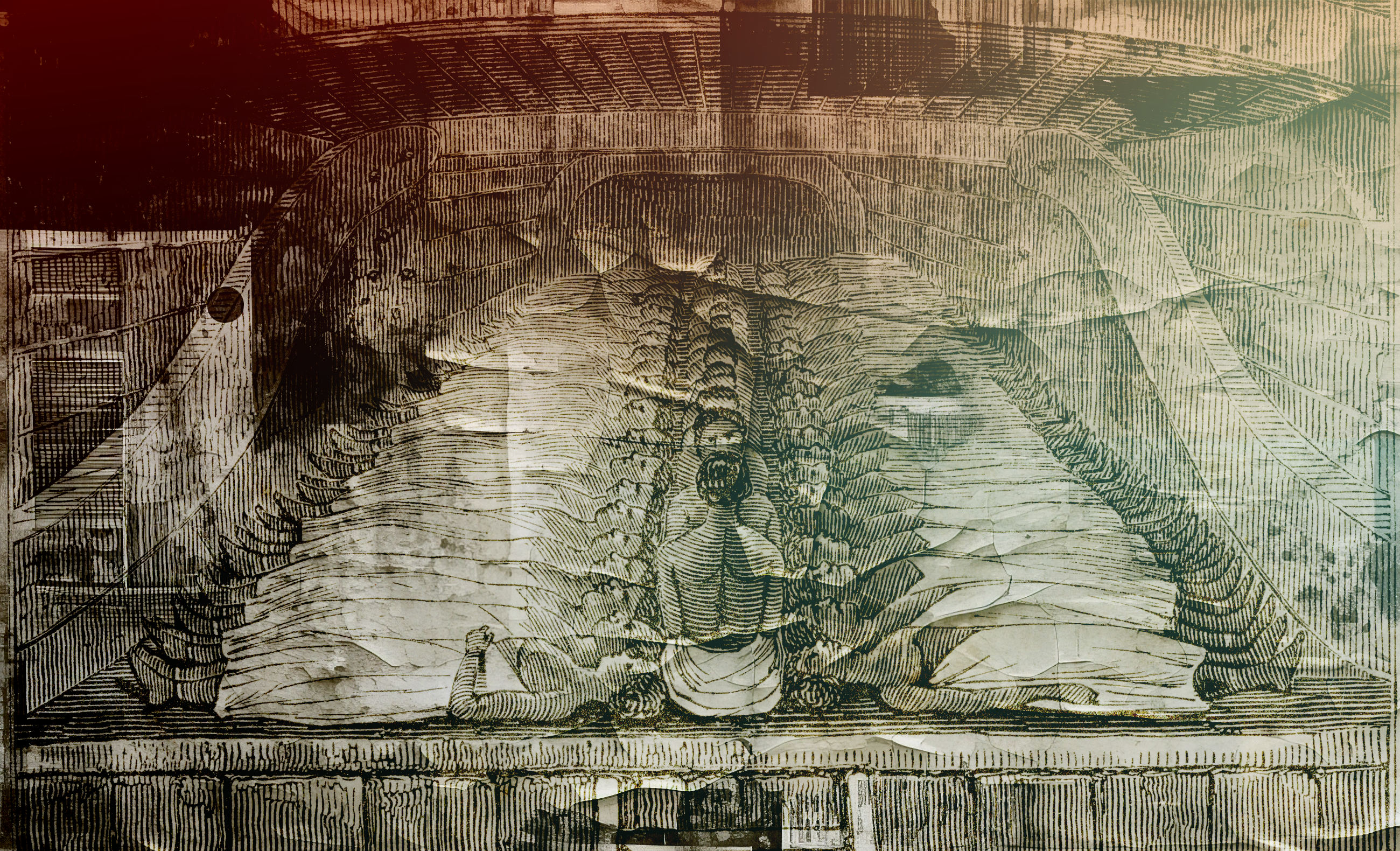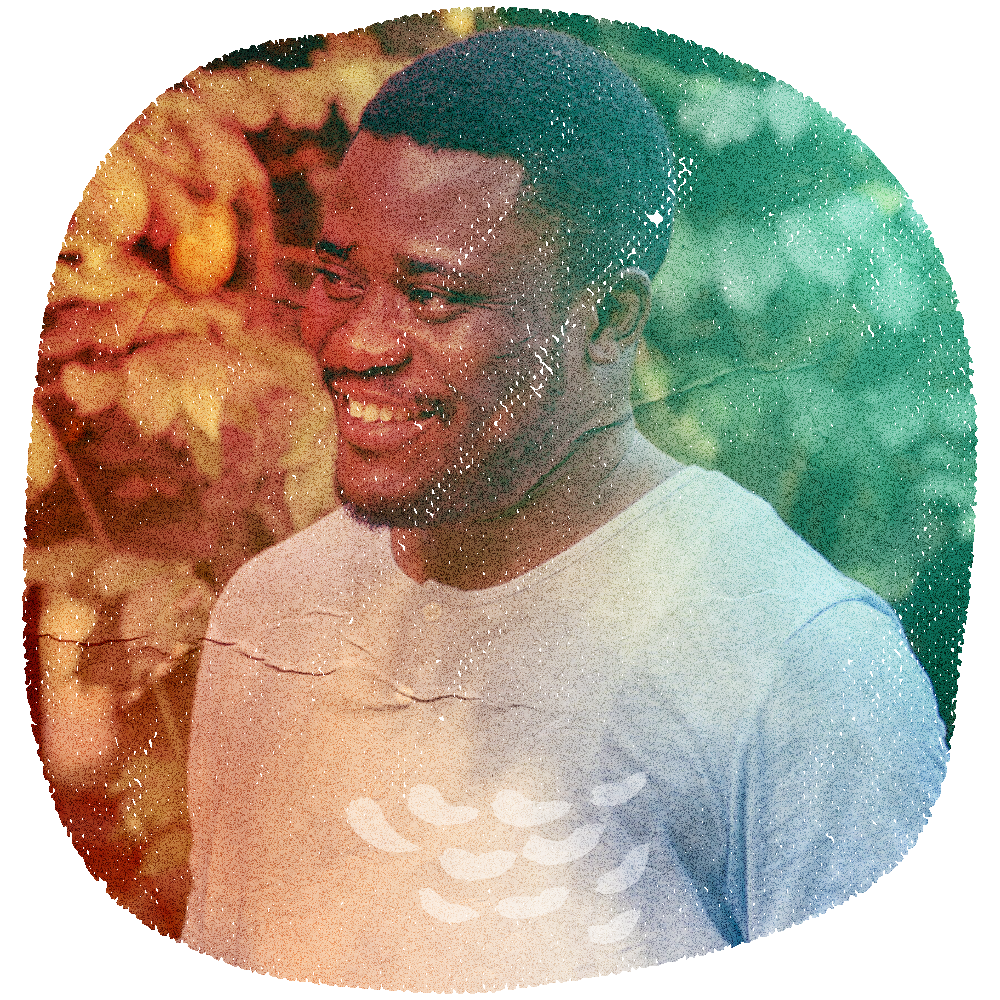
questions, questions, questions
What do we do about a world in peril?
How do we come to embrace these flaming times, extending tentacular webs of solidarity to those in the terrifying eruptions in the Middle East; to the coups in Africa as her citizens come to terms with the colonial underbellies of ‘democracy’; to the cobalt mines of Congo; and, to the clearings in the Amazon Forest and the decimated ecologies of orangutans and Sumatran tigers in Indonesia?
What could it even mean to care in a time so torn apart? In a time when a million push notifications on our phones, breaking news stories, and pixellated images of explosions and suffering children – spliced with ads, movie teaser-trailers, celebrity gossip, and gleaming red buttons that signal yet another call to action – calcify us into postures of cynicism and cultivated indifference? What is it to care when it seems jarringly easier to be exhaustively busy at the business of caring than it is to care at all? Are a thousand open Google Chrome browser tabs – sprawled across the screens of our wakeful hours – today’s portrait of caring?
What does it mean to be response-able within the blistering heat of climate chaos? If more than 90 percent of the West’s carefully curated trash ends up in the so-called Global South, on the streets and playgrounds in Gambia and Vietnam instead of in the emerald cities that promise the conscientious many recycled new products and a cleaner world, then how has climate justice reinscribed the same worlds we seek to leave behind?
Why does it mostly feel like the efforts to acknowledge the tensions of racialized violence and hegemonic gender relations leave us in increasingly shrivelled spaces of policed conformity and brittle social conventions?
How do we make sense of a world where to be ‘well’, to be afforded a clean bill of health, means one is troublingly entangled with practices that are increasingly at odds with ecological wellbeing?
And how do we catch those that fall as the architecture of white stability succumbs to the entropic flirtations of a world that refuses to be put in the family way, a world that will no longer be corralled, controlled, or flattened beneath the projects of the modern?
What do we do about a world in peril?
the one who acts
There is an increasingly palpable sense in which to ask these questions – to pose the questions of agency and accountability in our times and to ask what we can do now – is to be already too late. Most of our ideas about responsibility and action revolve around the exclusivity and sacrosanctity of the individual self, the citizen-subject. The one who acts. What these ideas obscure is that we live with the world. With it. Not above it.
Drawing lines between us and the world, we begin our accounts of responsibility from ourselves, from our intentions, from a politics of human actors who can – given the resources and time – change the world. The problem of course is that this vaunted, self-evident, liberal actor is ever more difficult to locate amidst the tides and flows and criss-crossing intensities of technology, geopolitics, microbial gestures, and multi-species animacies that are the conditions of life and death. We are learning that the one who acts is not ‘one’ at all, and action is dispersed across manifold networks that share the burden of how the world comes to be itself.
We do not act upon the world. We are the world in its unspeakable tensions, contradictions, experimentations, creativities, and messy alchemies.
It is not left to us to save the day.
This is where postactivism sprouts: at the trilling sites, at the crossroads, through the cracks, where ‘our’ doings and failings and indifferences and tabs and notifications – along with bacterial secretions, the pheromonic cartographies of army ants, the pollination songs of bees, and the sublime deceptions of rove beetles – open out into a minor gesture, a different inquiry. Maybe even a different political imaginary.
postactivism: a grace that flowers
Postactivism is the vocation of ‘ten’. An inquiry at the edges. An unworlding of worlds. The grace that penetrates the sensorial order that locks in. The line that departs from the loop. The invitation to stranger solidarities. The disrupted web that weaves new kinds of turns and gestures and movements. The syncopated intensities that disarrange the dominant tendencies and ways of acting.
When a sensorial order is broken, when patterns experience crises and cracks, an opportune moment presents itself. I have often called this eruption ‘selah’, naming it after the Judeo-ethnomusicological concept that marks the place of the pause, of rest, of something else pushing through the cyclicity of problems and the solutions that keep them alive.
I think of ‘ten’ as a response to a selah, a struggle with imaginaries we cannot yet articulate, with loss, with noticing that it is often the way we respond to the crisis that is the crisis. A convening at the place the road stops abruptly, no longer stretching into the vistas of convenient continuity.
Postactivism is this convening. Neither a manifesto nor a creed, neither a successor narrative that works by pathologizing other perspectives nor a universalizing ethic. Postactivism is a para-activism, a para-aesthetic. It is how blackness[1] travels.
A gesturing with other worlds that opens new intradisciplinary fields of questions about responsibility, time, justice, context, ethics, death and life, the non/possibility of knowing the ‘other, and more.
Postactivism is ‘when’ something outside the economy of moral calculations (how do we save the planet and achieve justice for all?), epistemic configurations (who has power?), and aesthetic considerations of the familiar cuts through, flashes up, breaks through, dashes across the parabola of our trails, leaving us undone. Unravelled.
Postactivism is the monstrous eruption of new tensions, the emergence of grace, which forces new considerations and gestures. Postactivism is not a project, it is grace. A grace that flowers.
postactivism: agnostos theos
Perhaps the story of ‘ten’ and the precious vocation it bears might best be told through the stone markings of an ancient Greek city as well as the fabled trans-Atlantic crossing of a trickster god.
When Paul – itinerant evangelist, prolific author of almost all the letters that make up the Christian New Testament, and citizen of Rome – wandered the streets of Athens, making his way to the Areopagus, he was struck by the monuments raised to the well-known pantheon of deities that shaped Greek life. He would eventually come to a curious inscription, raised to a god without a name: Ἄγνωστος Θεός. In Ancient Greek, the words either meant “To an unknown god” or “To an unknowable god”. Whichever it was, Paul seized upon the moment – seeing it as an opportunity to evangelize, to promote his monotheistic thesis. To Paul, the agnostos theos inscription was a mark of Grecian ignorance, a deficit in their ways of knowing. He was there to fill the crack.
I have often thought of the agnostos theos inscription as something more than just a deficit to be filled – with more data, with persistent action, with more funding, with more exposure, with more of what we already know. Quite to the contrary, I imagine it as an excess, a site where culture curdles, curls in on itself, and retreats from its business of naming and framing things. It is the mark on the walls of a sensorial order, the swirl of senses that ignite and enlist bodies in particular world-ritualizing arrangements, where a new god is met, where the screams of the spirits of the fault lines pierces through the surface tensions and anxieties of the familiar, and where a new kind of gesture or posture is critically desired.
To be specific, the agnostos theos is where culture marks its death. Where its resources cannot meet the challenge of something barely felt, some intensity that schizzes the thorough lines by which we demarcate the operations of the world.
Contrary to popular opinion, the inscription wasn’t confined to Athens. It is everywhere around us.
Climate science convenes the figures and calculate the data, cranking its tools to measure the Earth’s fury. Their conclusions about the Anthropocene suggest that the global order needs to change to address the increasingly certain future of no future that forces itself on our imaginaries. To indefinitely postpone this future of no future, it throws solutions at the breach in the wall. It throws money, philanthropy, capital, legislation, activism, and prayer. But the crack grows, asking for something else outside the economies of relations, signs, and rituals that sustain the science. Something other than resolution or justice.
The history of the racialization of Black and Brown bodies opens up histories of painful marks, tender flesh, and hegemonic relations codified as colonial settlements. The quest for racial justice and civil rights has long animated activists longing to address those residual hegemonic dynamics – especially in multiracial societies. But after years of activism, state-sponsored trainings, affirmative legislation, and painfully won education and scholarship on the matter of race and equality, it seems the problems with racial tensions persist. Everything we can throw at the issue seems inadequate.
All we seem capable of doing with the technologies we have is to gather at the fault lines, the crack, and point at it. Our efforts to close it up, to fix it, to rehabilitate the unknown god and render it legible fall flat at the feet of its majesty.

postactivism: embarkation
The legends whispered about the Yoruba god, Èsù, suggest that he also came face to face with the troubling inscription, the mark of an end. But there, at the signless sign, Èsù forged a different kind of exercise: embarkation.
When the slave ships pulled close to West African shores, exchanging mirrors and gunpowder for Black bodies, the god of metal and victory – Ogun – mounted up irregular forces to try to chase away the traders and their slaving enterprise. But on the way to the shores, the noble god was intercepted by his brother, the trickster, Èsù, who persuaded his furious sibling to reconsider how he approached the problem. Lulling Ogun and his entourage to sleep with a strong brew of palm wine and platitudes, Èsù stole away into the night, sneaking aboard the slave ships with his many parts, choosing an act of radical accompaniment in place of a ‘solution’, the upbeat in place of the major key, the posture of the fugitive in place of the victor.
At the Door of No Return, the Bights of Benin and Biafra, across the swirling waters of the Atlantic Ocean, the sky and ground conspired to inscribe an agnostos theos. Èsù, whose name would later be adopted by the Anglican Mission to translate the Devil of the Christian texts to the Yoruba language, travelled into the inscription. He was carried away into the creolized imaginaries marked by European arrivals.
It is this embarkation – this poetics of being carried away – that occasions the necessity of a postactivism, a para-activism, a para-aesthetic, a consideration of agency and accountability that knows how to travel well.
Embarkation is a black poetics of migrant dust, errant bodies, bacchanal displacements, and dense milieus that destabilize subjectivity as belonging to the subject and, instead, favour impermanent molecular movements over “fixed notions and representations of personhood”, “fixed solutions”, or final outcomes. Embarkation doesn’t begin with a subject, with a getting on the boat. It is preindividual, a field of gestures and thresholds and intensities – the movement that precedes (and enlists) the I that moves. However, it is tied to the ‘boat’ and its voyages in convening blackness – not just across the Atlantic Ocean but across the cobblestones and asphalted tarmacs of the civilization and citizenry it helped build and name. Embarkation names the counterhegemonic forces at work right now, the ‘great blast of life’, of which our forms and identities are only outlines of a movement. Bodies without organs. Perhaps one might recognize embarkation in those barely perceptible moments when the familiar feels strange, slightly off, beside itself.
ten is a politics of the third way
ten is a convening at the site of the agnostos theos, the light holding of bodies gently swaying to the syncopated arrhythmic arrivals of loss in the mechanical grip of whiteness. ten is the invitation to embarkation, the partial tracing out and nomadic quest for a binary-dissolving third way, for a minor gesture that exceeds method, for a pragmatics of the useless, for a sensorial apostasy, for a mutiny that upsets the patterns that lock us in.
ten is the anagrammatic disruption of politics as usual. ten is a gesturing towards the unheard-of, the unsaid, the middling places glossed over by the neurotypical lines we draw from ourselves to utopia. ten is an a-communal longing for failure, for hybrids, for stranger solidarities, for openings.
ten is an attempt at the end of the world.
[1] By blackness, I do not mean ‘Blackness’ (with a big B) which is premised on identitarian principles and travels closely with considerations about settlement, representation, and more. I mean the counterhegemonic force of decay that unworlds the world, pulling design apart, swirling with potencies for other ways of being with the world.




